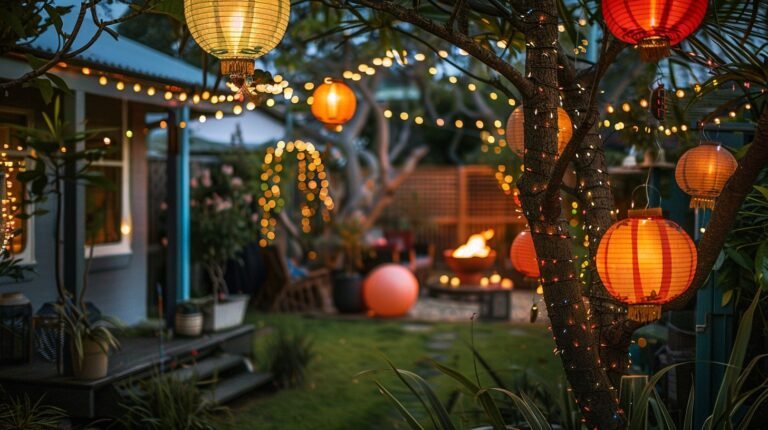Did you know that the wrong pathway light brightness can decrease your home’s security instead of enhancing it? I’ve spent years helping homeowners navigate the complex world of outdoor lighting, and I’ve seen firsthand how the right solar pathway light brightness can transform a property.
With the average homeowner investing $200-300 in pathway lighting, getting it right the first time isn’t just about aesthetics – it’s about protecting your investment and ensuring your outdoor spaces are beautiful and functional.

What Factors Determine the Perfect Solar Path Light Brightness?
Understanding solar pathway light brightness isn’t just about picking the brightest option. Let’s examine the essential factors that influence lighting decisions and how to make the best choice for your specific needs.
Understanding Lumens vs. Watts
When shopping for solar pathway lights, you’ll notice two measurements: lumens and watts. While watts measure energy consumption, lumens measure the actual light output. For pathway lighting, you’ll want to focus on lumens. Most effective solar path lights range from 5-300 lumens, depending on their intended use.
Traditional wisdom suggested focusing on wattage, but even low-wattage lights can produce impressive brightness with modern LED technology.
For example, a 2-watt LED solar light can produce the same brightness as a 25-watt traditional bulb, making solar-powered walkway illumination efficient and effective.
Evaluating Your Space Requirements
Before selecting your solar garden light intensity, consider these crucial factors:
- Pathway width and length
- Surrounding landscape features
- Existing ambient light
- Security needs
- Architectural style
A narrow garden path might only need 50-100 lumens per light, while a main entrance pathway could require 100-200 lumens for optimal illumination.
Recommended Brightness Levels for Different Applications
Entry Pathways and Main Walkways
For primary pathways leading to your home’s entrance, aim for 100-200 lumens per light. This provides enough illumination for safety while maintaining a welcoming atmosphere. Position lights every 6-8 feet for consistent coverage.
Garden Paths and Secondary Routes
Gardens and secondary paths work well with 50-100 lumens per light. This lower intensity creates a more intimate atmosphere while still providing adequate visibility for navigation. The softer light also helps preserve the natural ambiance of your garden space.
Decorative Accent Lighting
For purely decorative purposes, 15-50 lumens is often sufficient. These lower-intensity lights can create beautiful patterns and highlight landscape features without overwhelming the space.
Optimizing Your Solar Light Performance
Proper Positioning for Maximum Efficiency
The key to maintaining consistent pathway lighting brightness lies in proper positioning. Install your solar panels where they’ll receive 6-8 hours of direct sunlight daily. South-facing installations typically perform best in the Northern Hemisphere.
Seasonal Adjustments and Maintenance
Solar light performance varies with the seasons. During winter months, you might need to:
- Clean solar panels more frequently
- Adjust the angle for optimal sun exposure
- Consider upgrading to higher-lumen options
- Implement motion sensor path lights for enhanced efficiency
Advanced Features Worth Considering
Smart Integration and Control Options
Modern solar pathway lights often come with advanced features that can enhance their functionality:
- Motion detection capabilities
- Adjustable brightness settings
- Dusk-to-dawn automation
- Smartphone connectivity
- Color temperature options
These features can help optimize your outdoor lighting design principles while maximizing energy efficiency.
Environmental and Cost Benefits
Making the switch to solar pathway lighting offers significant advantages:
- Zero operational electricity costs
- Reduced carbon footprint
- Minimal maintenance requirements
- Long-term durability
- Enhanced property value
A typical solar pathway lighting system pays for itself within 12-18 months through energy savings alone.
Installation and Maintenance Tips
Professional Installation vs. DIY
While many homeowners successfully install their solar pathway lights, professional installation might be worth considering for:
- Complex lighting layouts
- Large properties
- Integrated security systems
- Challenging terrain
- Custom lighting designs
Maintenance Schedule
To maintain optimal brightness:
- Clean solar panels monthly
- Check for debris accumulation
- Verify proper alignment
- Test motion sensors quarterly
- Replace batteries as needed (if applicable)
Frequently Asked Questions
Q: How many lumens do I need for a typical garden path?
A: For most garden paths, 50-100 lumens per light provides adequate illumination while maintaining ambiance.
Q: How long do solar pathway lights typically last?
A: Quality solar pathway lights can last 3-5 years with proper maintenance. LED bulbs typically last 50,000+ hours.
Q: Do solar lights work in winter?
A: Yes, but with reduced performance. Higher lumen ratings and proper positioning become more critical during winter months.
Q: How far apart should I space my pathway lights?
A: Generally, space lights are 6-8 feet apart for even illumination. Adjust based on light intensity and path width.
Q: Can solar lights be too bright?
A: Yes! Excessive brightness can create harsh glare and light pollution. Match brightness to your specific needs using our guidelines above.
Conclusion
Selecting the right solar pathway light brightness doesn’t have to be overwhelming. By understanding your specific needs, considering environmental factors, and following proper installation and maintenance procedures, you can create beautiful, functional outdoor lighting that enhances your property’s safety and aesthetics.
Remember, the perfect lighting solution balances functionality with ambiance. Whether you’re illuminating a grand entrance, a quiet garden path, or a Moonlight Effect, the right brightness level makes all the difference. Start with our recommended lumen ranges, and don’t hesitate to adjust based on your specific situation and preferences.
Ready to transform your outdoor space? Use this guide as your roadmap to perfect pathway lighting, and enjoy the beauty and security of well-planned outdoor illumination for years to come!



